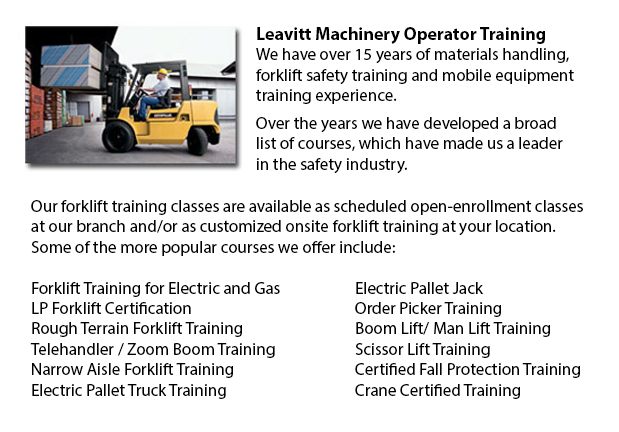
Aerial Lift Training Mississauga - Aerial forklifts are able to accommodate many odd jobs involving high and tough reaching spaces. Usually utilized to execute routine preservation in buildings with elevated ceilings, prune tree branches, raise heavy shelving units or repair phone lines. A ladder might also be used for many of the aforementioned projects, although aerial lifts offer more safety and strength when correctly used.
There are several different models of aerial lifts available, each being capable of performing moderately unique tasks. Painters will usually use a scissor lift platform, which can be used to get in touch with the 2nd story of buildings. The scissor aerial platform lifts use criss-cross braces to stretch and lengthen upwards. There is a table attached to the top of the braces that rises simultaneously as the criss-cross braces lift.
Cherry pickers and bucket lift trucks are a different version of the aerial hoist. Typically, they contain a bucket at the end of a long arm and as the arm unfolds, the attached bucket platform rises. Forklifts utilize a pronged arm that rises upwards as the lever is moved. Boom hoists have a hydraulic arm that extends outward and hoists the platform. All of these aerial lift trucks require special training to operate.
Through the Occupational Safety & Health Association, also labeled OSHA, education courses are offered to help ensure the workforce meet occupational values for safety, system operation, inspection and maintenance and machine weight capacities. Workers receive qualifications upon completion of the lessons and only OSHA certified employees should drive aerial hoists. The Occupational Safety & Health Organization has established rules to maintain safety and prevent injury while using aerial lifts. Common sense rules such as not using this machine to give rides and ensuring all tires on aerial platform lifts are braced so as to hinder machine tipping are observed within the guidelines.
Unfortunately, data reveal that greater than 20 aerial hoist operators pass away each year while operating and almost ten percent of those are commercial painters. The majority of these accidents were caused by improper tie bracing, hence a few of these might have been prevented. Operators should ensure that all wheels are locked and braces as a critical safety precaution to stop the device from toppling over.
Other rules include marking the encircling area of the machine in an obvious manner to safeguard passers-by and to guarantee they do not approach too close to the operating machine. It is vital to ensure that there are also 10 feet of clearance between any electrical cables and the aerial hoist. Operators of this equipment are also highly recommended to always wear the proper safety harness while up in the air.
-
Reach Trucks
Reach Truck Training Mississauga - Reach trucks are loading devices used by different types of establishments that sustain a warehouse facility or circulation center relating to the organization of completed merchandise and supplies on pallets which... More -
Terex Forklift
Terex Forklift Forklift Training - Terex Forklifts takes immense pride in producing quality equipment that helps upgrade their customers' performance while standing by their mission to provide a cost effective yet reliable product line. Through sever... More -
Boom Trucks
Boom Trucks Training Mississauga - A boom truck is often recognized by the cable and telephone business vehicles that have the elongated arm folded over their roofs. Commonly, a bucket-like apparatus sits at the extension of extendable arms. Often la... More -
JLG Telehandler
JLG Telehandler Training Mississauga - After retiring in the late 1960's, John L. Grove set out on a cross country RV voyage. After spending many years establishing his family built crane business with his brother, John had no idea that this journey... More -
Doosan Forklift
Doosan Forklift Training Mississauga - Doosan Infracore Company Ltd. is an intercontinental organization consisting of Diesel Engines, Defense Industry products, Industrial Vehicles, Construction Technologies and Machine Tools and Mechanization Syste... More

Forklift Training Mississauga
TOLL FREE: 1-888-254-6157
Mississauga, Ontario
forklifttrainingmississauga.ca
Email Us
About Us


